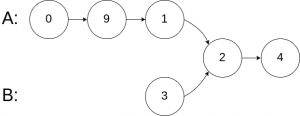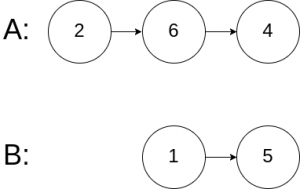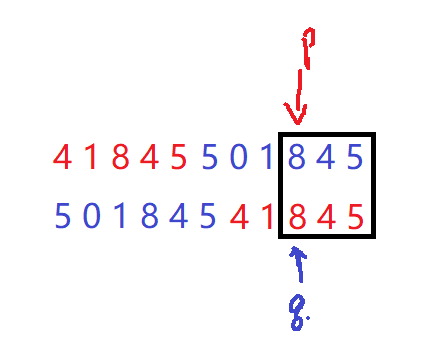本文已收录到:LeetCode刷题 专题
- 42. 接雨水 (Trapping Rain Water)
- [LeetCode] 2. 两数相加 2. Add Two Numbers
- [LeetCode] 19. 删除链表的倒数第N个节点 19. Remove Nth Node From End of List
- [LeetCode] 21. 合并两个有序链表(Merge Two Sorted Lists)
- [LeetCode] 24. 两两交换链表中的节点(Swap Nodes in Pairs)
- [LeetCode] 61. 旋转链表(Rotate List)
- [LeetCode] 82. 删除排序链表中的重复元素 II(Remove Duplicates from Sorted List II)
- [LeetCode] 83. 删除排序链表中的重复元素(Remove Duplicates from Sorted List)
- [LeetCode] 86. 分隔链表(Partition List)
- [LeetCode] 206. 反转链表(Reverse Linked List)
- [LeetCode] 92. 反转链表 II(Reverse Linked List II)
- [LeetCode] 147. 对链表进行插入排序(Insertion Sort List)
- [LeetCode] 203. 移除链表元素(Remove Linked List Elements)
- [LeetCode] 160. 相交链表(Intersection of Two Linked Lists)
- [LeetCode] 237. 删除链表中的节点 (Delete Node in a Linked List)
- [LeetCode] 328. 奇偶链表 (Odd Even Linked List)
- [LeetCode] 876. 链表的中间结点 (Middle of the Linked List)
- [LeetCode] 1290. 二进制链表转整数 (Convert Binary Number in a Linked List to Integer)
- [LeetCode] 141. 环形链表 (Linked List Cycle)
- [LeetCode] 142. 环形链表 II (Linked List Cycle II)
- [LeetCode] 283. 移动零 (Move Zeroes)
- [LeetCode] 496. 下一个更大元素 I (Next Greater Element I)
- [LeetCode] 503. 下一个更大元素 II (Next Greater Element II)
- [LeetCode] 456. 132模式 (132 Pattern)
- [LeetCode] 20. 有效的括号 (Valid Parentheses)
- [LeetCode] 94. 二叉树的中序遍历 (Binary Tree Inorder Traversal)
- [LeetCode] 144. 二叉树的前序遍历 (Binary Tree Preorder Traversal)
- [LeetCode] 145. 二叉树的后序遍历 (Binary Tree Postorder Traversal)
[title]题目[/title]
编写一个程序,找到两个单链表相交的起始节点。
如下面的两个链表:
在节点 c1 开始相交。
示例 1:
输入:intersectVal = 8, listA = [4,1,8,4,5], listB = [5,0,1,8,4,5], skipA = 2, skipB = 3
输出:Reference of the node with value = 8
输入解释:相交节点的值为 8 (注意,如果两个列表相交则不能为 0)。从各自的表头开始算起,链表 A 为 [4,1,8,4,5],链表 B 为 [5,0,1,8,4,5]。在 A 中,相交节点前有 2 个节点;在 B 中,相交节点前有 3 个节点。
示例 2:
输入:intersectVal = 2, listA = [0,9,1,2,4], listB = [3,2,4], skipA = 3, skipB = 1
输出:Reference of the node with value = 2
输入解释:相交节点的值为 2 (注意,如果两个列表相交则不能为 0)。从各自的表头开始算起,链表 A 为 [0,9,1,2,4],链表 B 为 [3,2,4]。在 A 中,相交节点前有 3 个节点;在 B 中,相交节点前有 1 个节点。
示例 3:
输入:intersectVal = 0, listA = [2,6,4], listB = [1,5], skipA = 3, skipB = 2
输出:null
输入解释:从各自的表头开始算起,链表 A 为 [2,6,4],链表 B 为 [1,5]。由于这两个链表不相交,所以 intersectVal 必须为 0,而 skipA 和 skipB 可以是任意值。
解释:这两个链表不相交,因此返回 null。
注意:
如果两个链表没有交点,返回 null.
在返回结果后,两个链表仍须保持原有的结构。
可假定整个链表结构中没有循环。
程序尽量满足 O(n) 时间复杂度,且仅用 O(1) 内存。
来源:力扣(LeetCode)
链接:https://leetcode-cn.com/problems/intersection-of-two-linked-lists
著作权归领扣网络所有。商业转载请联系官方授权,非商业转载请注明出处。
[title]视频讲解[/title]
[bilibili cid=”” page=”1″]455184589[/bilibili]
[title]简明思路[/title]
[title]代码[/title]
/**
* Definition for singly-linked list.
* struct ListNode {
* int val;
* ListNode *next;
* ListNode(int x) : val(x), next(NULL) {}
* };
*/
class Solution {
public:
ListNode *getIntersectionNode(ListNode *headA, ListNode *headB) {
if (headA == nullptr || headB == nullptr) return nullptr;
ListNode* p = headA;
ListNode* q = headB;
while (p != q)
{
p == nullptr ? p = headB : p = p->next;
q == nullptr ? q = headA : q = q->next;
}
return p;
}
};





